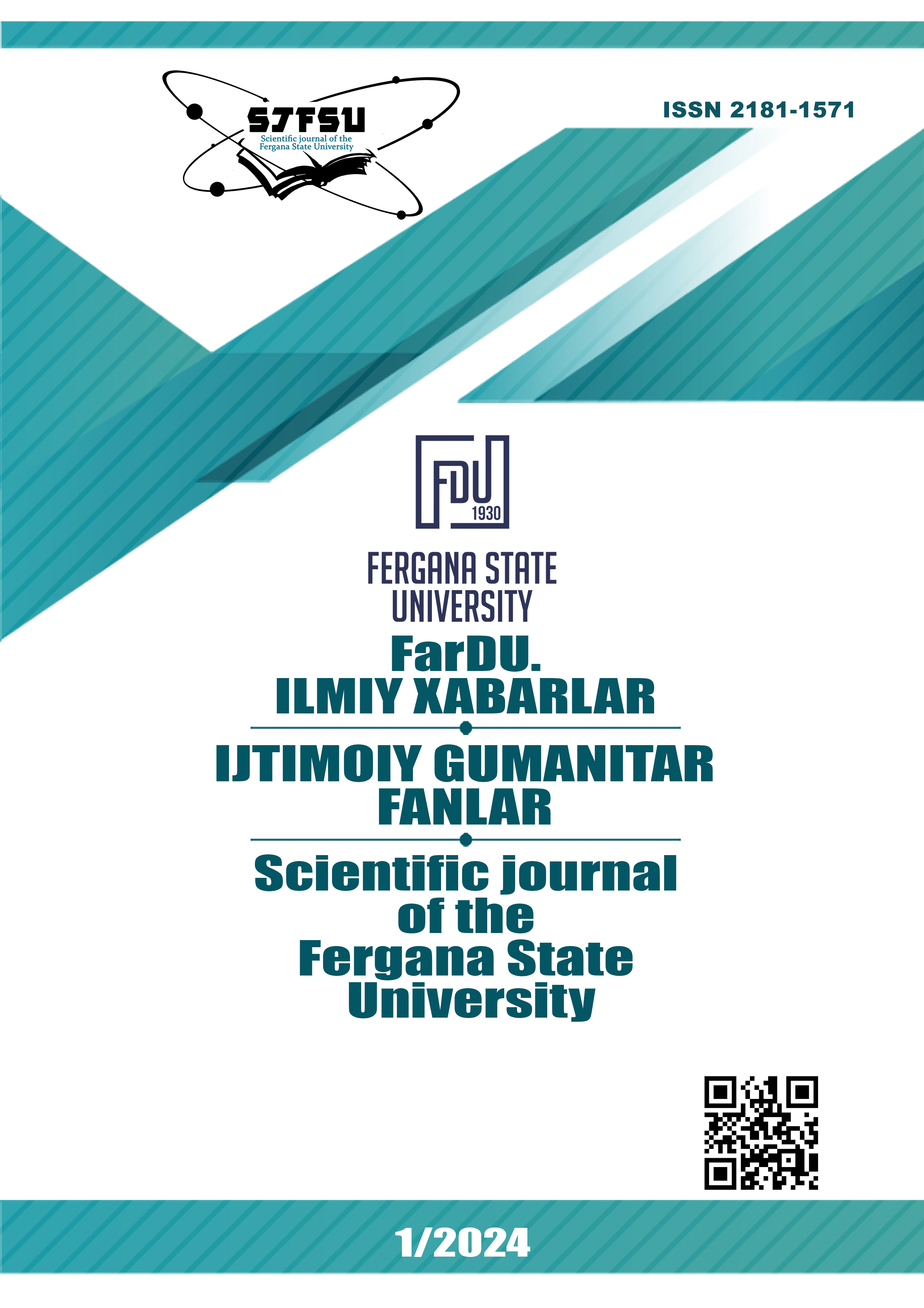LINGUOCULTURAL CHARACTERISTICS OF PROVERBS EXPRESSING AESTHETIC VALUES IN ENGLISH AND UZBEK LANGUAGES
Keywords:
proverb, aesthetic value, culture, paremiology, cultural comparison, linguistic culture, folk genre.Abstract
This article describes the linguistic and cultural characteristics of proverbs in English and Uzbek languages that reflect aesthetic values and culture. By comparing Uzbek and English proverbs, we can see that the cultural characteristics of the two languages are compared to each other. In this article, comparative and contrastive analysis methods were used to compare the proverbs of these two languages. The article gives samples of many examples of folk oral creativity and compares their translations and compares culture of the two languages. As a result of comparing the language and culture of the two languages, many similarities and differences became invisible. It became obvious that the meaning of the words changed during the translation process.
References
ADABIYOTLAR RO‘YXATI
M.Boyxanov “Uzbek translations of some english proverbs and translation problems” Mental Enlightenment Scientifific-Methodological Sh Journal 2022, 79-bet
O‘.K.Axmedova “Ingliz va o‘zbek maqollarining lingvokulturologik va semantic xususiyatlari” Urganch 2014, 14-bet
M.Y.Mirzaaxmedova “Ingliz va o‘zbek tillarida maqollarning milliy-madaniy va universal xususiyatlari” Oriental Renaissance: innovative, educational, natural and social sciences jurnali 2021, 276-bet
X.Berdiyorov, R.Rasulov “O‘zbek tilining paremiologik lug‘ati” Toshkent “O‘qituvchi” 1984, 38-50 betlar
Anna Borowska “Introduction to Paremiology: A Comprehensive Guide to Proverb Studies” Hrisztalina Hrisztova-Gotthardt, 2014, 70-72 betlar
To‘ra Mirzayev “O‘zbek xalq maqollari” www.ziyouz.com kutubxonasi
Downloads
Published
Issue
Section
License
Copyright (c) 2024 Scientific journal of the Fergana State University

This work is licensed under a Creative Commons Attribution-NonCommercial-NoDerivatives 4.0 International License.
Most read articles by the same author(s)
- , РАЗВИТИЕ ТВОРЧЕСКИХ КАЧЕСТВ УЧИТЕЛЯ НАЧАЛЬНЫХ КЛАССОВ , Scientific journal of the Fergana State University: No. 3 (2024): Scientific journal of the Fergana State University. Application set (Social humanities sciences)
- , LIFE DEDICATED TO SCIENCE , Scientific journal of the Fergana State University: No. 4 (2024): FarDU.Ilmiy xabarlar jurnali (Aniq va tabiiy fanlar)
- , "DEVELOPMENT STRATEGY" BASED ON EDUCATION AND HUMANITY AS A SOURCE OF SUSTAINABLE DEVELOPMENT OF SOCIETY , Scientific journal of the Fergana State University: No. 6 (2024): FarDU.Ilmiy xabarlar jurnali (Aniq va tabiiy fanlar)
- , PEDAGOGICAL CONSIDERATIONS FOR DEVELOPING KNOWLEDGE OF THE HISTORY OF UZBEK MUSIC AMONG FUTURE MUSIC TEACHERS , Scientific journal of the Fergana State University: No. 2 (2025): FarDU ilmiy xabarlari jurnali (PEDAGOGIKA)
- , NEUROTECHNOLOGIES AS INNOVATIVE TOOLS IN PEDAGOGY , Scientific journal of the Fergana State University: No. 6 (2024): FarDU.Ilmiy xabarlar jurnali (Aniq va tabiiy fanlar)
- , SYNTHESIS OF TRADITION AND UPDATES IN TURKISH , Scientific journal of the Fergana State University: No. 6 (2024): Scientific journal of the Fergana State University (Social humanities sciences)
- , PEDAGOGICAL ASPECTS OF THE FORMATION OF KNOWLEDGE ON THE HISTORY OF UZBEK MUSIC AMONG FUTURE MUSIC TEACHERS , Scientific journal of the Fergana State University: No. 2 (2025): FarDU ilmiy xabarlari jurnali (PEDAGOGIKA)

